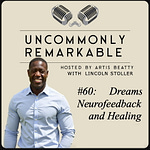“Honesty is the first chapter in the book of wisdom.” — Thomas Jefferson
Getting a Straight Answer
Many of my clients struggle with contradictions. Contradictions are to be expected and resolving them is healthy. We are assailed by many counter productive forces woven into necessary situations.
I rarely presume to know more than my clients, but some people’s evasion is so exceptional that their self-denial is obvious. I not only see what they need, but I know what they refuse to admit.
This does not become immediately clear. Once I start to suspect ulterior motives I test for them, and the results are uncertain. It takes some time to see through a mask of lies, many of which are quite pleasant.
All of us evade our contradictions in our efforts to assert what we believe to be true. And the closer you come to the conflicts you yourself have created, the more obstacles you create to seeing them. People’s dishonesty becomes more evident the closer you get to the truth that they don’t want to admit. This applies to almost everything you believe.
Seeing the Truth But Not Saying the Truth
Client X had a troubled relationship with their spouse. This was exacerbated by X’s repeatedly bringing up a certain topic of conversation. X hired me to help them stop bringing up this quarrelsome issue. They didn’t want to resolve the problem, they simply wanted to avoid it.
I advised them to approach the problem directly but they said this was impossible. Nevertheless, over a period of weeks their relationship with their spouse was improving probably because they were showing some integrity in dealing with the issue. This is what they told me and I believe what I’m told. I have no alternative, barring access to greater insight or more accurate information.
Then, they abruptly canceled all future sessions without discussion. They said they had decided they suffered from an unrelated and implausible mental condition and were going to seek help from someone who specialized in it. As this new condition had never been an issue, I had not revealed to them that I specialized in this issue.
It was clear to me that they were evading the issue which is what they typically did. They were making up an excuse that one part of them believed while another part of them knew was false.
There was a small amount of honesty in their change of direction as they really did need to perpetuate their troubled relationship, but they were dishonest with me and, I suspect, always had been. I did not contradict their self-diagnosis and I did not object to their decision. When a person commits themselves to dishonesty and wants to escape, it is best to let them go.
Internal Truth Versus External Truth
What is or is not obvious depends on context. If you accept general rules of social behavior—such as the kind of relationships and responsibilities you should have—then you’ll ascribe various motives to the people who play their parts. But when you evaluate behaviors on their own you discern less obvious intentions. The benefit of being an outsider is the opportunity to see motivations for what they are.
Two parts to understanding interpersonal situations are the context of the whole and the motivations of the individuals. Understanding the motivations requires an understanding of what people expect. This gets complicated when you, the outside observer, have your own expectations. A counselor needs to remove themself from their client’s equation.
To understand the situations I encounter in therapy, I ask for the context and the intentions of those involved. This is a question that will have layered answers. There will be the simple answer, the social answer, the personal answer, honest answer, and the subconscious answer.
The simple answer is a defense of the role you want to play, which can be a good or bad actor depending on your need. The social answer is the one others will most readily agree with. This is the explanation of your behavior according to what others endorse.
Your personal answer is a reasonable story based on your situation. It’s a story you can argue and, if others don’t support you right away, you can always add more detail. It’s your story so you’ll always have the last word.
Your honest answer is crafted to create empathy and support. It’s more emotional than logical and it’s what you honestly want to believe. There is some truth to it, but generally not that much. It’s easy to insist that you’re being honest when the truth is subjective. Subjective truth is an area where you can always improve yourself to positive ends.
The subconscious answer is the most interesting because it has the largest scope. It combines as much of the past, present, and future as you can hold in your mind. It combines the greatest number of different threads and makes the least sense. It is the picture closest to reality.
It would be better to call this the subconscious story as it doesn’t have a point or answer any question. It is your attempt to understand yourself, and while you can always improve your story it will never feel complete.
Listen to this episode with a 7-day free trial
Subscribe to Stream of Subconsciousness to listen to this post and get 7 days of free access to the full post archives.













